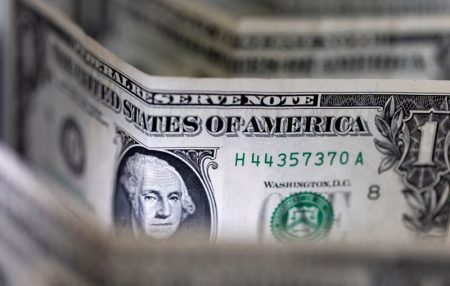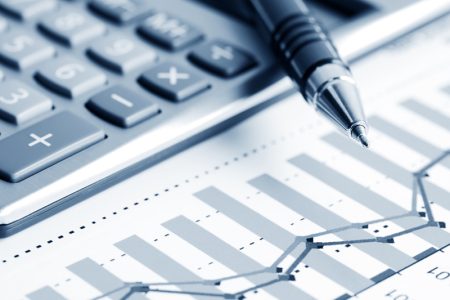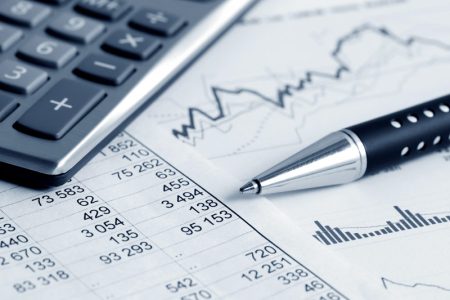In 2023, we have seen global central banks struggle with inflation. Following interest rate hikes by central banks worldwide, global inflation has fallen from around 10% in the summer of 2022 to its current level of less than 5%. As a consequence of rising interest rates, higher asset return requirements have also become a drag on the global economy.
In 2024, we are in for an election year of heightened geopolitical tensions in the U.S. and worldwide. In addition, the likelihood of the Fed guiding the U.S. economy to a safe landing with interest rates is still being determined. Besides, a global recession is still not out of the question.
We have therefore looked at two possible scenarios for market behavior. The baseline scenario would mark a resumption of global growth, so we consider it positive. The non-basic scenario implies the realization of most economic and geopolitical risks—so it can be called negative.
Baseline scenario—soft landing
The positive scenario assumes a continued improvement in macroeconomic indicators—inflation will fall so much that central banks will start cutting rates. In this case, the U.S. Federal Reserve keeps the key rate on pause until the June meeting and then proceeds to its systematic reduction. Thus, in the first half of 2024, fixed-income equities (government and other bonds) and equities will be in less demand amidst the uncertainty, prioritizing defensive assets such as gold and bitcoin.
Business cycles are outpacing economic cycles, so global asset rebalancing will begin early in March. The most likely trigger for investors will be the Fed meeting on the 19th and 20th of March with a summary of economic projections and information from corporations during earnings season.
Although the U.S. economy gives the main impetus for the global financial markets, events in the rest of the world should also be considered. As macroeconomic indicators improve, we will likely see a moderate recovery in manufacturing activity in Europe and an improvement in the U.K. labor market. The Japanese Central Bank may announce its intention to raise the key rate in the second half of 2024. A decrease in geopolitical tensions in the zones of military conflicts will accompany all this.
“The tactics of traders’ actions imply working on the uptrend of gold and bitcoin from the beginning of the year to mid-March—the period before the two-day meeting of the U.S. Federal Reserve,” said Kar Yong Ang, Octa’s financial market analyst. “From late March to early April 2024, traders should sell the U.S. dollar in all major currency pairs,” added Kar Yong Ang.
Non-basic scenario—recession is not excluded
The labor market is critical in determining whether economic conditions move from a soft to a hard landing. In this case, even with inflation stabilizing, we will see how the economy has failed to sustain excessive interest rate rises. This continues to negatively impact yields on all bond issues, cascading into all parts of the financial market. Corporations will tend to cut labor costs, provoking a further decline in consumer spending.
By mid-2024, we will see the flywheel of high interest rates provoke a significant rise in unemployment rates, consumer credit, and mortgage delinquencies. From the second half of 2024, this will move from the consumer back to the corporate sector and then on to macroeconomic indicators—at the end of the year, corporate revenues tend to decline significantly, and unemployment is rising.
By September 2024, the situation will likely be so unambiguous that central banks will return to long-forgotten Quantitative Easing (QE) to support corporations and the labor market. Separately, in such a situation, the Bank of Japan is unlikely to abandon its negative interest rate policy, thus giving insight into the USD/JPY dynamics in 2024. Together with the destabilization of the global economy, geopolitical tensions remain.
“Due to high interest rates, investors will continue using defensive assets until September 2024. Traders’ tactics should be based on this—betting on stable growth in gold, oil, gas, bitcoin,” said Kar Yong Ang, Octa’s financial market analyst. “After the September events, the uncertainty increases significantly, as the effect of hypothetical QE will not be immediate. In addition, the final of the U.S. election race makes the picture even more unpredictable,” he added.
These scenarios share an identical trajectory from early 2024 to mid-March. After that, market dynamics can be characterized as either risk-off or risk-on. Awareness of the underlying trends and understanding future patterns could be a good trading opportunity in any of the scenarios described in 2024.
Octa is an international broker that has been providing online trading services worldwide since 2011. It offers commission-free access to financial markets and various services already utilized by clients from 180 countries with more than 42 million trading accounts. Free educational webinars, articles, and analytical tools they provide help clients reach their investment goals.
The company is involved in a comprehensive network of charitable and humanitarian initiatives, including the improvement of educational infrastructure and short-notice relief projects supporting local communities.
Octa has also won over 60 awards since its foundation, including the ‘Best Educational Broker 2023’ award from Global Forex Awards and the ‘Best Global Broker Asia 2022’ award from International Business Magazine.
Read the full article here















